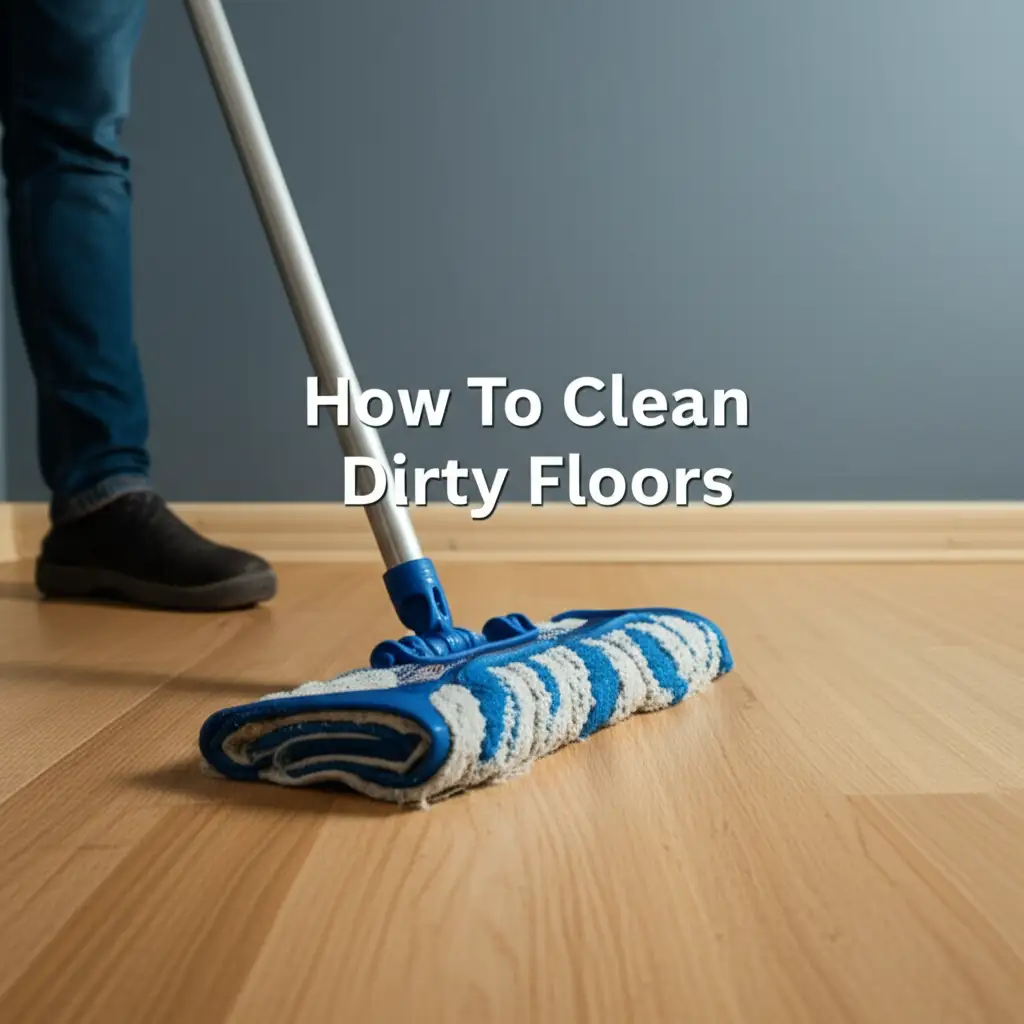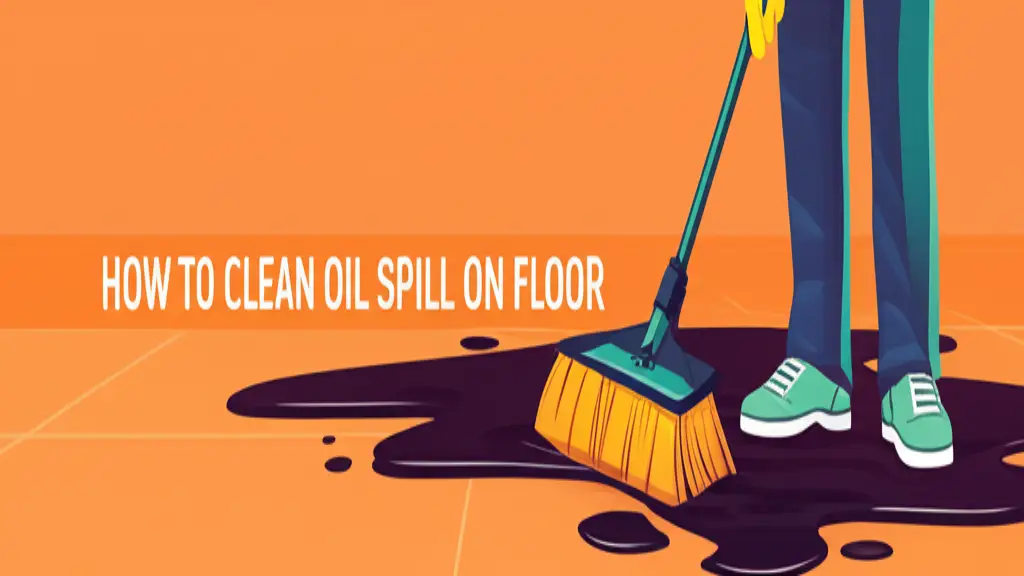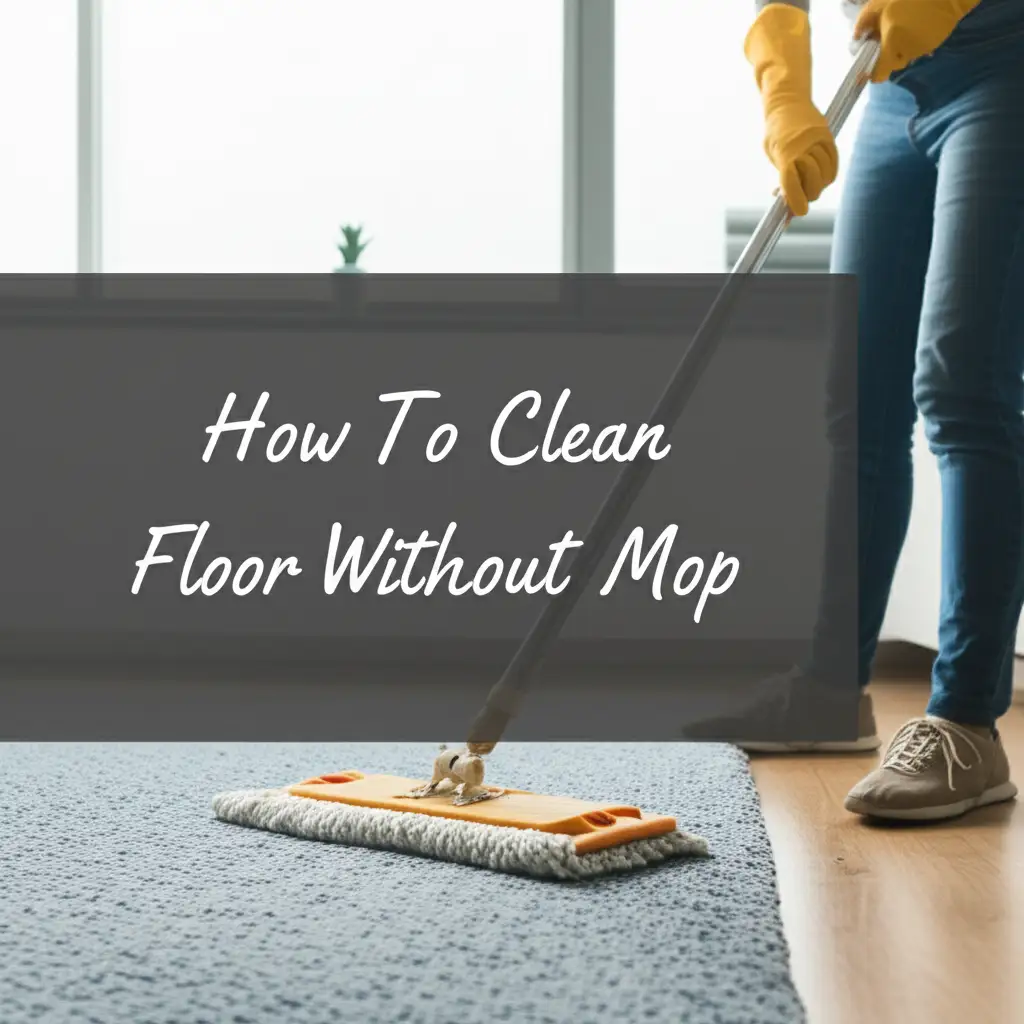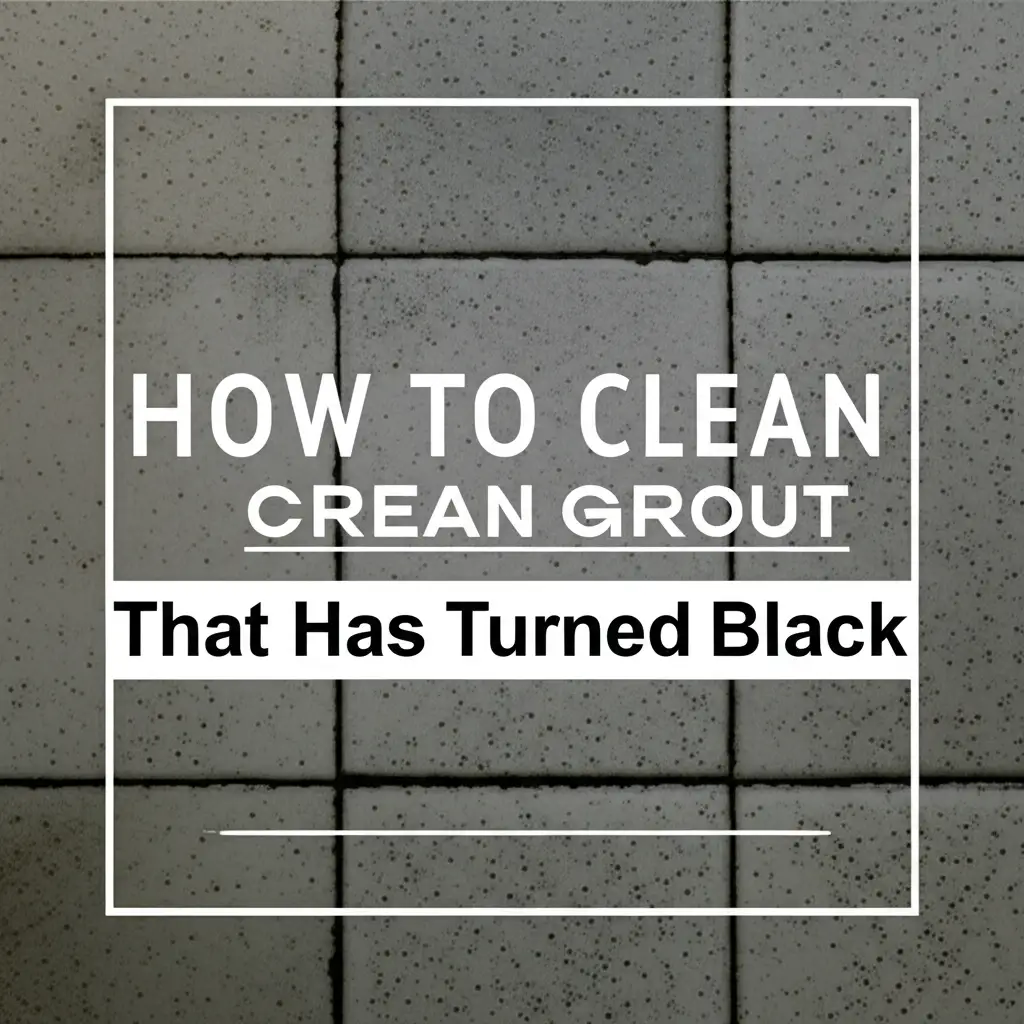· Home Cleaning · 19 min read
How To Clean Porcelain Tile Floors Without Streaks

Mastering Streak-Free Porcelain Tile Cleaning
Is there anything more frustrating than cleaning your beautiful porcelain tile floors only to find them covered in streaks once they dry? You want your floors to gleam, reflecting light, not showing every wipe mark. Many people struggle with this challenge. Achieving a spotless, streak-free finish on porcelain tile floors is not just a dream. It is an attainable goal with the right approach and tools.
I understand the desire for perfectly clean floors. Streaks can make a freshly cleaned floor look dull and dirty. This article will guide you through effective methods to clean porcelain tile floors without streaks. We will cover everything from understanding your tile to using the best tools and homemade solutions. You will learn how to prevent residue buildup and tackle tough spots. Get ready to enjoy truly clean, sparkling floors.
Takeaway
Achieving streak-free porcelain tile floors requires careful steps. You need the right tools and effective cleaning solutions.
- Always prepare the floor by sweeping or vacuuming.
- Choose the correct mop type, like a microfiber flat mop.
- Use a diluted, low-suds cleaning solution, or make your own with white vinegar.
- Rinse the floor thoroughly with clean water.
- Dry the floor quickly to prevent water spots and streaks.
How do you clean porcelain tile floors without streaks?
To clean porcelain tile floors without streaks, first, sweep away loose debris. Then, mop with a solution of warm water and a small amount of mild, pH-neutral cleaner or white vinegar. Rinse the floor thoroughly with clean water using a clean mop head. Finally, dry the tiles immediately with a clean, dry microfiber cloth or a floor fan to prevent water marks.
Understanding Porcelain Tile: What Makes It Unique?
Porcelain tile is a popular choice for flooring in many homes. It is known for its durability and low porosity. This means porcelain tile resists water and stains well. Its density makes it less likely to absorb liquids compared to ceramic tile. These properties make porcelain an excellent material for high-traffic areas and bathrooms.
However, the very qualities that make porcelain durable can also make it challenging to clean without streaks. The smooth, dense surface does not absorb cleaner residue or water easily. If you leave any film or moisture behind, it will dry and show as streaks. This is why standard mopping techniques often fall short. You need to use specific methods to get a truly streak-free finish.
Consider the finish of your porcelain tile. Polished porcelain has a highly reflective surface. This type of tile shows streaks more readily than matte or unglazed porcelain. Matte finishes tend to hide minor imperfections better. Textured porcelain can trap dirt in its grooves, making cleaning more involved. Knowing your tile type helps you choose the best cleaning approach.
Porcelain tile itself does not cause streaks. The streaks come from the cleaning process. This includes using too much cleaner, the wrong type of cleaner, or not rinsing properly. Hard water can also leave mineral deposits that look like streaks. Understanding these factors is the first step toward getting spotless floors.
Essential Tools and Supplies for Streak-Free Cleaning
Having the right tools is half the battle when cleaning porcelain tile floors without streaks. Forget the traditional string mops that push dirt around. They often leave too much water and residue. You need specific items that help lift dirt and ensure a clean, dry finish. Let me tell you about what I find most effective.
First, a good quality vacuum cleaner or dust mop is essential. You must remove all loose dirt, dust, and debris before wet mopping. If you skip this step, you will just be spreading grime around. This will lead to muddy streaks. A vacuum with a soft floor attachment works well. A microfiber dust mop is also excellent for picking up fine particles.
Next, invest in a flat microfiber mop. These mops are game-changers for streak-free cleaning. Microfiber material is designed to pick up dirt and moisture effectively. A flat head allows for even pressure across the tile surface. It also helps you control the amount of water applied. Make sure your mop has a washable and reusable pad. This ensures you always start with a clean pad.
You will also need two buckets. One bucket is for your cleaning solution, and the other is for clean rinse water. This two-bucket system prevents you from putting dirty water back on your floor. For drying, a large, clean microfiber towel or a separate dry microfiber mop pad is very useful. Some people even use a squeegee with great success for quick drying.
Finally, consider your cleaning solution. I recommend a pH-neutral cleaner specifically designed for tile or a simple homemade solution. Avoid harsh chemicals, oil-based cleaners, or soap-based detergents. These can leave a sticky residue that causes streaks. For more ideas on effective, natural cleaning solutions, you might find tips in guides on how to clean your dishwasher with vinegar and baking soda or how to clean a washing machine with baking soda and vinegar. These natural ingredients are often key to streak-free results.
The Step-by-Step Routine Cleaning Process
Cleaning your porcelain tile floors regularly helps prevent tough buildup and streaks. A consistent routine makes the job easier and keeps your floors looking their best. I follow a simple, effective process every time I clean my floors. This method helps me achieve a streak-free shine.
Start by preparing the floor. Use a vacuum cleaner or a dust mop to remove all loose dirt and debris. Pay attention to corners and edges. Any small particles left behind can scratch the tile or get mixed into your cleaning solution, causing streaks. This initial dry cleaning step is vital for a truly clean finish.
Next, prepare your cleaning solution. For routine cleaning, I often use warm water mixed with a small amount of white vinegar. A common ratio is half a cup of white vinegar per gallon of warm water. White vinegar is a natural degreaser and evaporates quickly, which helps prevent streaks. If you prefer a commercial cleaner, choose a pH-neutral, low-suds product designed for tile. Always dilute it according to the manufacturer’s instructions. Using too much cleaner is a common cause of streaks.
Now, it is time to mop. Dip your microfiber mop into the cleaning solution. Wring it out thoroughly. The mop should be damp, not soaking wet. Excess water will prolong drying time and increase the chance of streaks. Mop in small sections. Overlap your strokes slightly to ensure even coverage. Work your way across the room, moving backwards toward the exit.
After mopping a section with the cleaning solution, immediately rinse it. Use a separate bucket of clean, plain warm water and a clean mop head. Rinse the mop head frequently in the clean water. This step removes any cleaning solution residue and dissolved dirt. This rinsing step is crucial for preventing streaks. Finally, dry the section. Use a clean, dry microfiber cloth or a second dry mop head to wipe the surface. You can also use a fan to speed up drying. Quick drying is key to a streak-free result. For more tips on achieving streak-free surfaces, consider how principles used to clean black glass stove tops without streaks can apply here, as they often involve careful rinsing and drying.
Homemade Solutions for a Streak-Free Shine
Many commercial floor cleaners can leave a sticky residue or film on porcelain tiles. This leads to frustrating streaks. I have found that some of the best solutions for streak-free cleaning are simple ingredients you already have at home. These natural options are often more effective and safer for your family and pets. They also evaporate cleanly, preventing residue.
One of my favorite homemade solutions is a white vinegar and water mixture. Vinegar is acidic, which helps cut through grease, grime, and hard water deposits. It leaves a sparkling, streak-free finish. For regular cleaning, mix half a cup of white distilled vinegar with one gallon of warm water. You can adjust the ratio slightly based on how dirty your floors are. Make sure to use white vinegar, not apple cider vinegar, as apple cider vinegar can leave a residue due to its color and natural sugars.
For a deeper clean or to tackle tougher spots, baking soda can be a powerful ally. Baking soda is a mild abrasive and odor absorber. You can create a paste with baking soda and water for spot treatment. Mix a small amount of baking soda with just enough water to form a thick paste. Apply this paste directly to the stained area, let it sit for a few minutes, then gently scrub with a soft brush or cloth. Rinse thoroughly afterward. Baking soda is also great for freshening grout. For cleaning tips involving baking soda in other areas, like stainless steel pans, you can see its versatility.
Another option for slightly scented cleaning is to add a few drops of essential oil to your vinegar and water solution. Lemon or tea tree oil can add a pleasant scent and offer additional cleaning benefits. Just a few drops are enough. Do not add too much, as oil can sometimes leave a slight film. Always test any new homemade solution in an inconspicuous area first to ensure it does not harm your tile or grout.
I find these homemade solutions incredibly effective. They are budget-friendly, environmentally friendly, and provide excellent streak-free results. The key is proper dilution and thorough rinsing, regardless of the cleaner you choose. These natural options simplify the rinsing process as they leave less residue than many commercial detergents.
Tackling Tough Stains and Residue Without Streaks
Even with routine cleaning, porcelain tile floors can accumulate tough stains, residue, or dullness over time. These issues require a more targeted approach than simple mopping. The goal remains the same: remove the problem without leaving behind new streaks. I have found specific strategies that work wonders for these stubborn issues.
If your floors look dull and streaky even after cleaning, you might have cleaning product residue buildup. Many commercial cleaners contain waxes or polymers that build up over time. To strip this residue, use a stronger vinegar solution. Mix one part white vinegar with two parts warm water. Mop a small section of the floor with this solution. Let it sit for 5-10 minutes to loosen the residue. Then, scrub gently with a soft brush or microfiber mop. Rinse the area thoroughly multiple times with clean water. Dry immediately. This process may need to be repeated for heavily coated areas.
For specific stains like food spills, dirt, or scuff marks, try a targeted approach. For most organic stains, a paste made from baking soda and water works well. Apply the paste directly to the stain. Let it sit for 15-30 minutes. Gently scrub with a soft brush or non-abrasive sponge. Rinse completely with clean water and dry. For greasy stains, a small amount of dish soap can be effective. Mix a drop or two of mild dish soap with warm water. Apply to the stain, scrub, then rinse very well.
Hard water stains can also cause streaky or cloudy appearances on your porcelain tile. These are mineral deposits left behind when water evaporates. Vinegar is excellent for dissolving hard water stains due to its acidity. Use a spray bottle filled with undiluted white vinegar. Spray the affected area directly. Let it sit for 5-10 minutes. Then, scrub with a soft brush and rinse thoroughly. For persistent hard water marks, you might find insights on how to clean hard water stains on shower glass. The principles are similar for dissolving mineral deposits.
Always remember to test any new cleaning method or product in an inconspicuous spot first. This ensures it does not damage your tile or grout. The key to removing tough stains and residue without streaks is patience, targeted application, and thorough rinsing followed by immediate drying. Avoid abrasive scrubbers or harsh chemicals that can damage the tile’s finish or leave chemical residue.
Grout Care: An Essential Part of Streak-Free Floors
When you aim for truly streak-free and clean porcelain tile floors, you cannot ignore the grout lines. Dirty or stained grout can make your entire floor look unkempt, even if the tiles themselves are sparkling. Grout is porous, meaning it can absorb dirt, grime, and even cleaning solution residue. This can contribute to the overall dull or streaky appearance of your floor.
Regular grout cleaning prevents deep stains and discoloration. I recommend incorporating grout cleaning into your deep cleaning routine. For routine maintenance, a simple paste of baking soda and water works wonderfully. Mix baking soda with enough water to create a thick paste. Apply this paste directly onto the grout lines. Let it sit for about 10-15 minutes. This allows the baking soda to penetrate and lift dirt.
After the paste has sat, use a small stiff brush, like a toothbrush or a specialized grout brush, to scrub the grout lines. You will see the dirt lifting away. For more stubborn spots, you can spray a bit of white vinegar directly onto the baking soda paste while scrubbing. The fizzing reaction helps to loosen even more grime. Remember to rinse the brush often in clean water to avoid spreading dirt.
Once you have scrubbed all the grout lines, rinse the entire area thoroughly with clean, warm water. Use a clean mop or a cloth to wipe away all the residue. Ensure no baking soda or vinegar solution is left behind, as this could dry into a powdery streak. It is important to remove all traces of the cleaning agent. This step is just as critical for grout as it is for the tiles themselves to prevent streaks.
If your grout is severely stained or discolored, you might need a dedicated grout cleaner. Choose an oxygen-based bleach cleaner for light-colored grout. Always follow the product instructions carefully. For dark-colored grout, test in an inconspicuous area first to ensure it does not cause discoloration. Proper grout care ensures your entire porcelain tile floor looks uniform and flawlessly clean, completing the streak-free effect you want.
Advanced Tips for Maintaining Porcelain Tile Luster
Achieving streak-free porcelain tile floors is great, but maintaining that pristine luster over time is the ultimate goal. Beyond regular cleaning, there are a few advanced tips that can help keep your floors looking their absolute best. These strategies focus on prevention and protection, extending the time between deep cleans.
First, consider using doormats at all entry points. These mats trap dirt, dust, and moisture before it tracks onto your porcelain tiles. Outdoor mats with a coarse texture help scrape off debris from shoes. Indoor mats, preferably absorbent ones, can catch any remaining moisture. This simple step significantly reduces the amount of dirt brought inside. Less dirt means less frequent and less intense cleaning.
Another tip is to quickly wipe up spills. Porcelain tile resists stains, but spills can leave behind residue that dries into streaks if not cleaned promptly. Wiping up a spill right away with a clean cloth and plain water prevents it from drying and leaving a mark. This is especially true for sugary drinks or greasy substances. A quick wipe can save you from a more involved cleaning later.
For high-traffic areas, or if you notice your floors are getting dull faster, adjust your cleaning frequency. You might need to dry dust or vacuum these areas more often than once a week. Frequent light cleaning prevents dirt from accumulating and becoming ingrained. This also means you will use less cleaning solution during your wet mopping, reducing the chances of streaks.
While porcelain tile itself does not need sealing, the grout lines often benefit from it. Sealing your grout helps it resist stains and moisture absorption. This makes the grout easier to clean and helps maintain the uniform appearance of your floor. Consult a professional or use a high-quality grout sealer designed for your grout type. Proper sealing can greatly enhance the longevity of your streak-free look.
Finally, avoid walking on freshly mopped floors until they are completely dry. Foot traffic on damp floors can leave footprints and smudges that dry into streaks. Use fans or open windows to speed up drying time. Patience here pays off, ensuring your hard work results in a truly spotless finish. These advanced tips help keep your porcelain tile floors looking new and streak-free for longer.
Common Mistakes to Avoid for a Spotless Finish
Achieving streak-free porcelain tile floors can feel like a puzzle. Sometimes, you make a mistake without even knowing it. I have learned over time that avoiding certain common errors is just as important as following the right steps. These pitfalls can turn your cleaning efforts into frustration, leaving you with dull or streaky floors.
One of the biggest mistakes is using too much cleaning solution. Many people think more soap means a cleaner floor. However, with porcelain tile, this is counterproductive. Excess soap creates excessive suds and leaves a sticky film behind. This film attracts dirt and dries into visible streaks. Always dilute your cleaner according to instructions, or even use slightly less than recommended. Less is often more when it comes to detergents on hard surfaces.
Another common error is not rinsing the floor properly. After mopping with a cleaning solution, you must rinse away all the dissolved dirt and cleaner residue. Using the same dirty water or not changing the rinse water frequently enough will only put grime back on the floor. This leads to streaks and a cloudy appearance. Always use a separate bucket of clean water for rinsing and change it as soon as it looks murky.
Using the wrong type of mop is also a frequent mistake. Cotton string mops or sponge mops can push dirty water around and leave too much moisture on the floor. They are also harder to wring out effectively. A microfiber flat mop, as I mentioned, is superior because it picks up dirt and moisture efficiently. It allows for better control of water application and removal, which is key for a streak-free finish.
Skipping the initial dry sweeping or vacuuming is another significant misstep. If you start wet mopping without removing loose dirt, you are essentially making mud. This muddy mixture will smear across your tiles, leaving streaks and making your job harder. Always take the time to thoroughly remove all dry debris first. This ensures your wet cleaning solution can focus on cleaning, not moving dirt around.
Lastly, not drying the floor thoroughly and quickly is a major cause of streaks. Water left on the tile surface, especially hard water, will evaporate and leave mineral deposits or water marks. These look like streaks. After rinsing, dry your floors immediately with a clean, dry microfiber cloth or a floor fan. Quick drying prevents water spots and ensures a sparkling finish. Avoiding these common mistakes will greatly improve your results and give you beautifully clean, streak-free porcelain tile floors.
FAQ Section
Q1: Can I use steam mops on porcelain tile without streaks?
A1: Yes, you can use steam mops on porcelain tile floors, and they often help achieve a streak-free finish. Steam mops use high heat to sanitize and clean without chemicals. This reduces the risk of chemical residue that causes streaks. Ensure you use a clean microfiber pad and allow the floor to dry quickly afterward. Move steadily to prevent over-saturating any one area.
Q2: What is the best commercial cleaner for streak-free porcelain tile?
A2: The best commercial cleaners for streak-free porcelain tile are pH-neutral, non-abrasive, and specifically designed for tile or stone. Look for products that are low-suds and residue-free. Avoid oil-based, wax-based, or harsh chemical cleaners. Always follow the dilution instructions carefully, as using too much cleaner is a common cause of streaks.
Q3: Why do my porcelain tiles look dull after cleaning?
A3: Your porcelain tiles may look dull after cleaning due to cleaning product residue buildup or hard water deposits. Many cleaners leave a film that attracts dirt and dulls the shine. Hard water leaves mineral spots as it dries. To fix this, strip the floor with a diluted white vinegar solution and rinse thoroughly. Always dry the floor completely after cleaning.
Q4: How often should I clean my porcelain tile floors?
A4: You should sweep or vacuum your porcelain tile floors daily or every other day, especially in high-traffic areas. Wet mopping for a streak-free shine is typically recommended once a week for most homes. If you have pets, children, or heavy foot traffic, you might need to wet mop more frequently. Deep cleaning, including grout, can be done monthly or quarterly.
Q5: Can I use a sponge mop for porcelain tile?
A5: While you can use a sponge mop, it is not ideal for achieving streak-free porcelain tile floors. Sponge mops tend to push dirty water around and often leave too much water on the surface. They are also less effective at wringing out thoroughly. A microfiber flat mop is a much better choice for picking up dirt and moisture, leading to a truly streak-free finish.
Q6: Does sealing porcelain tile prevent streaks?
A6: Porcelain tile itself is non-porous and typically does not need sealing. Therefore, sealing the tile surface itself will not prevent streaks. However, sealing your grout lines can help prevent them from absorbing dirt and stains. This makes the grout easier to clean and contributes to the overall clean appearance of your floor, which can indirectly enhance the streak-free look.
Conclusion
Achieving beautifully clean, streak-free porcelain tile floors is completely within your reach. It does not require expensive tools or harsh chemicals. It simply requires understanding the nature of your tile and employing the right techniques. I have shared with you my proven methods, from selecting the best tools to mastering homemade solutions and avoiding common mistakes.
Remember the key takeaways: preparation is vital, use the right mop, dilute your cleaners properly, and always, always rinse and dry thoroughly. By following these steps, you can eliminate frustrating streaks and enjoy the true beauty of your porcelain tile. Say goodbye to dull, hazy floors and hello to a brilliant, sparkling shine. Your porcelain tile floors can look pristine and enhance the beauty of your entire home. Start applying these tips today and see the incredible difference for yourself.
- porcelain floor cleaning
- streak-free tile
- tile maintenance
- floor cleaning tips
- homemade tile cleaner




